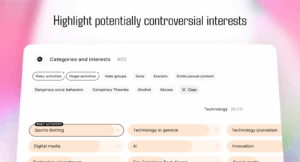Web development today can be a whirlwind of various technologies, and even the simplest of widgets can often be complex under the hood.
With that in mind, I’d like to focus on a variety of things you can do with just HTML and CSS, no JavaScript required. Why, you ask? While some of these solutions may not be practical for every use case, they do inspire outside-the-box thinking that promotes lowered complexity, and a wider array of browser support. Here are a few cool things you can do without having to write a single line of JavaScript.
Key Takeaways
- HTML and CSS can be used to build a variety of widgets and features, often without needing JavaScript. This can lead to simpler solutions with broader browser support.
- An accessible tabs widget can be created using the :focus pseudo-class in CSS and the tabindex attribute in HTML. However, this approach has limitations, such as the need for the user to click on a tab to see its content.
- A static image slider can be built using CSS animation and the translateX property. Hovering over the slider can be set to pause the animation, enhancing user interaction.
- Icons with file type indicators can be created using data attributes and the CSS content property. This approach works in most browsers.
- While JavaScript is powerful and versatile, CSS can often provide faster, more efficient, and simpler solutions for web development, particularly for beginners or for ensuring compatibility with older browsers.
Building a Tabs Widget
We’ve all seen how the checkbox hack can be used for interactivity without JavaScript, but unfortunately, this comes at a cost to accessibility. So instead of another checkbox tutorial, I’d like to show how you can create an accessible tabs widget using the :focus pseudo-class in CSS.
Using :focus
The :focus pseudo-class is used to target an element that has received focus by the user (either by using the keyboard or the mouse). It is supported in every browser including IE8+. Additionally, you can apply a :focus state to any HTML element as long as you give it a tabindex attribute.
Using the tabindex Attribute
HTML’s tabindex attribute indicates if an element can receive focus. It can take several values, including a negative value, zero, or a positive value. Each of these values determines what order an element should be focused on.
Demo for the Tabs Widget
See the Pen Pure CSS Tabs Widget by SitePoint (@SitePoint) on CodePen.
In the HTML, each tab is a button with the content for each tab inside of a paragraph element. Each paragraph element is hidden, then set to position: absolute so that the content will display in the same area for each tab. The first button element has the autofocus attribute, so that the first tab will be visible on the initial page load. Each tab is wrapped in a div, and each div is given a tabindex value, which allows the <div> to be focusable.
As for the CSS, each button is set to display: inline-block, allowing for the tabs to appear side by side. We apply the :focuspsuedo-class to the button and use the adjacent sibling selector to show the related paragraph element when the button is focused. I’ve also added focus styles to the tab’s container div, which means that the tab will keep its focused state until the user clicks outside the entire widget.
Caveats for the Tabs Widget
Because this widget depends on the :focus psuedo-class, the tabbed content will be visible only when the tabs have a focused state. This means that the user will always have to click on a tab to see content. The autofocus attribute does allow one of the tabs to be visible on initial page load, but as soon as the user interacts with the page, the focus will be lost.
Browser Support for the Tabs Widget
I’ve tested this in IE8, and everything works as expected, except for the autofocus attribute, being that it’s an HTML5 feature. Chrome, Firefox, and Opera also work as expected, but the demo does not work in Safari unless the tab key is being used to apply focus. In the following demo the :focus pseudo-class doesn’t work in any of the versions of Safari that I’ve tested, which I suspect is due to a WebKit bug. I haven’t found a way around this issue, but as long as the WebKit bug is addressed, this technique should work just fine when the user clicks on the tabs.
Overall, the :focus pseudo-class can be a great way to add functionality to HTML and CSS, without having to invoke the use of JavaScript. If you enjoyed this demo, be sure to leave a comment, and more importantly, file a bug with Safari!
Building an Image Slider
If you need a simple static site with an image slider, a CSS only approach is a great way to keep your website fast an light. Let’s look at a quick example.
HTML and CSS for the Slider
We start with an outer container using a section element with a class of slideshow. Inside is a slideshow container where the images are placed. This slideshow also works with content other than images. To highlight that, we have a div with a class of text-container that is used to hold our non-image content.
The outermost container of the demo has a fixed width, and its overflow property is set to “hidden”. The container inside of this, which holds our slide content, has a much larger width, so that the images and text content can be placed next to each other without wrapping to a new line. It’s important to note that this container has to be exactly as wide as our slide content, or else the slides won’t transition properly.
Using CSS Animation
The slide class is where we apply the animation. The animation uses the translateX property to drag the long row of content across the outer container, which forms a mask, simulating the transition of slides.
The animation timing is one of the most important factors here. To get an even number of seconds between slide transitions, we need to multiply our desired transition time by the number of slides in our slider. Here we have four slides, and our desired transition is six seconds per slide – so our animation time needs to be 24 seconds long before it repeats. The infinite repetition is controlled by the “infinite” value on the animation-iteration-count property.
Setting up the Keyframes for this animation can be tedious. The goal is to get the animation to look like it pauses for each image, even though it never really does. To do this we need to define at least two empty keyframes per slide. This creates the pause effect, because the keyframes define key intervals in which the translateX property does not update. You can see this in the demo on line 66 of the CSS.
As an added bonus, hovering over the slider will pause the animation. This is done by setting the animation-play-state property to “paused” when targeting the slideshow-container element’s :hover state.
The Image Slider Demo
See the Pen Pure CSS Image Slider by SitePoint (@SitePoint) on CodePen.
Browser Support for the Image Slider
Works as expected in all browsers including IE10 and up!
Creating Icons with File Type Indicators
A while ago I was working on a WordPress site when I came across a potentially challenging design. In this case, different icons were needed to represent links based on their file types. This was a great time to present a JavaScript-free solution on a JavaScript-heavy website. The following demo shows how to get information from a block of HTML and display it with the CSS content property.
HTML and CSS for the File Type Icons
In this demo, I’m using data attributes to display the type of file that the user will be redirected to when they click the link.
The CSS content property takes as a value an attr() function that allows us to get the value of our HTML data attribute. Using the ::after pseudo-element, we create a small black bar that holds the tet in the content property, and we position it to display on the left side of our icon.
The CSS attr() function represents an exciting part of the specification, but currently does not have any browser support for use outside of the content property.
File Type Icons Demo
See the Pen File Type Icons with Data Attributes by SitePoint (@SitePoint) on CodePen.
Browser Support for the File Type Icons
I was surprised to find that this demo worked in every browser I tested it in, except for IE8 of course!
Conclusion
It’s becoming more common for developers to build things without JavaScript. These might not be great solutions for all use cases, but they’re options to consider and learning the concepts involved can deepen our understanding of CSS.
Frequently Asked Questions (FAQs) about CSS and JavaScript
Can I create interactive web elements without using JavaScript?
Absolutely! While JavaScript is a powerful tool for creating interactive web elements, it’s not the only option. CSS (Cascading Style Sheets) can also be used to create a variety of interactive elements, such as tabs, sliders, and carousels. By using CSS, you can reduce the load time of your website and improve its performance.
How can I create a CSS carousel slider without JavaScript?
Creating a CSS carousel slider without JavaScript involves using the CSS :target selector. This selector allows you to style an element that has been targeted by a link. By using this selector, you can create a carousel slider that rotates through different content when a user clicks on a link.
What are the benefits of using CSS over JavaScript for web development?
CSS has several advantages over JavaScript for web development. First, CSS is generally faster and more efficient than JavaScript, which can improve the performance of your website. Second, CSS is easier to learn and use than JavaScript, making it a great choice for beginners. Finally, CSS is more compatible with older browsers than JavaScript, ensuring that your website will work properly for all users.
Can I create navigation tabs using only CSS?
Yes, you can create navigation tabs using only CSS. This can be done using the CSS :checked pseudo-class selector. This selector allows you to style an element when it is in a certain state, such as when a checkbox is checked. By using this selector, you can create navigation tabs that change content when a user clicks on a tab.
How can I create an automatic image slider using only HTML and CSS?
Creating an automatic image slider using only HTML and CSS involves using the CSS animation property. This property allows you to create animations by changing the CSS properties of an element over time. By using this property, you can create an image slider that automatically rotates through different images.
What are some common challenges when creating interactive web elements with CSS?
While CSS is a powerful tool for creating interactive web elements, it does have some limitations. For example, CSS animations can be more complex to create than JavaScript animations. Additionally, CSS does not have the same level of interactivity as JavaScript, which can limit what you can do with your web elements.
Can I use CSS to create interactive web elements for mobile devices?
Yes, you can use CSS to create interactive web elements for mobile devices. CSS is fully compatible with all modern mobile browsers, and you can use media queries to create responsive designs that adapt to different screen sizes.
How can I improve the performance of my website using CSS?
There are several ways to improve the performance of your website using CSS. First, you can use CSS to create lightweight, efficient designs that load quickly. Second, you can use CSS to create animations and transitions that are smoother and more efficient than JavaScript animations. Finally, you can use CSS to create responsive designs that adapt to different screen sizes, improving the user experience on mobile devices.
Can I use CSS to create complex animations?
While CSS is not as powerful as JavaScript for creating complex animations, it is still capable of creating a wide range of animations. By using the CSS animation property, you can create animations that change the CSS properties of an element over time. This allows you to create a variety of animations, from simple transitions to complex sequences.
How can I learn more about using CSS for web development?
There are many resources available for learning about CSS for web development. Online tutorials, courses, and forums can provide a wealth of information on the subject. Additionally, practicing by creating your own web elements can be a great way to learn and improve your skills.
Tim Evko is a front end web developer from New York, with a passion for responsive web development, Sass, and JavaScript. He lives on coffee, CodePen demos and flannel shirts.







